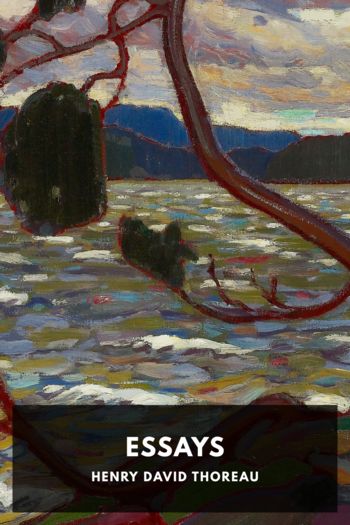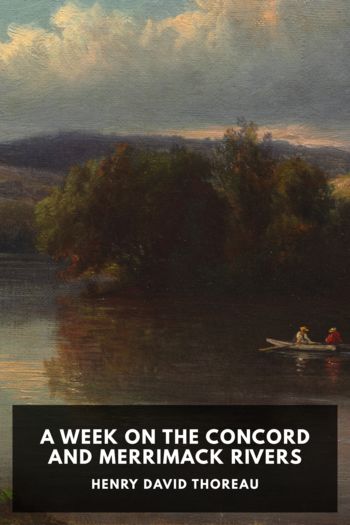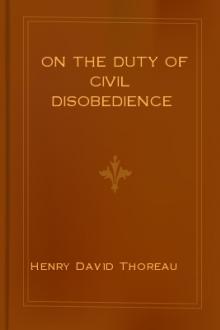Essays by Henry David Thoreau (feel good books .txt) 📕

Description
Though perhaps most famous for Walden, Henry David Thoreau was also a prolific essayist. Many of his essays touch on subjects similar to his famous book: long walks through nature, things found in moonlight that are invisible and unheard during the day, his preference for wild apples over domestic ones. In many ways he prefigured environmentalism, expressing his love for untouched nature and lamenting what the encroachment of man and cities were doing to it.
He also had strong opinions on many other subjects. One of his most famous essays, “On the Duty of Civil Disobedience,” was written as a result of his going to jail for refusing to pay several years’ worth of poll taxes. One of the primary reasons for his refusal was his holding the government in contempt for its support of slavery, and several of his other essays express support and admiration for John Brown, who thought to start a slave revolt when he attacked Harper’s Ferry in 1859.
Whether discussing trees in a forest, slavery, or the works of Thomas Carlyle, Thoreau’s essays are deeply personal and full of keen observations, often in poetic language. They give a sense of the man expressing them as being much more than the views being expressed.
Read free book «Essays by Henry David Thoreau (feel good books .txt) 📕» - read online or download for free at americanlibrarybooks.com
- Author: Henry David Thoreau
Read book online «Essays by Henry David Thoreau (feel good books .txt) 📕». Author - Henry David Thoreau
Early the next morning we started on our return up the Penobscot, my companion wishing to go about twenty-five miles above the Moosehead Carry to a camp near the junction of the two forks, and look for moose there. Our host allowed us something for the quarter of the moose which we had brought, and which he was glad to get. Two explorers from Chamberlain Lake started at the same time that we did. Red flannel shirts should be worn in the woods, if only for the fine contrast which this color makes with the evergreens and the water. Thus I thought when I saw the forms of the explorers in their birch, poling up the rapids before us, far off against the forest. It is the surveyor’s color also, most distinctly seen under all circumstances. We stopped to dine at Ragmuff, as before. My companion it was who wandered up the stream to look for moose this time, while Joe went to sleep on the bank, so that we felt sure of him; and I improved the opportunity to botanize and bathe. Soon after starting again, while Joe was gone back in the canoe for the frying-pan, which had been left, we picked a couple of quarts of tree-cranberries for a sauce.
I was surprised by Joe’s asking me how far it was to the Moosehorn. He was pretty well acquainted with this stream, but he had noticed that I was curious about distances, and had several maps. He, and Indians generally, with whom I have talked, are not able to describe dimensions or distances in our measures with any accuracy. He could tell, perhaps, at what time we should arrive, but not how far it was. We saw a few wood ducks, sheldrakes, and black ducks, but they were not so numerous there at that season as on our river at home. We scared the same family of wood ducks before us, going and returning. We also heard the note of one fish hawk, somewhat like that of a pigeon woodpecker, and soon after saw him perched near the top of a dead white pine against the island where we had first camped, while a company of peetweets were twittering and teetering about over the carcass of a moose on a low sandy spit just beneath. We drove the fish hawk from perch to perch, each time eliciting a scream or whistle, for many miles before us. Our course being upstream, we were obliged to work much harder than before, and had frequent use for a pole. Sometimes all three of us paddled together, standing up, small and heavily laden as the canoe was. About six miles from Moosehead, we began to see the mountains east of the north end of the lake, and at four o’clock we reached the carry.
The Indians were still encamped here. There were three, including the St. Francis Indian who had come in the steamer with us. One of the others was called Sabattis. Joe and the St. Francis Indian were plainly clear Indian, the other two apparently mixed Indian and white; but the difference was confined to their features and complexion, for all that I could see. We here cooked the tongue of the moose for supper—having left the nose, which is esteemed the choicest part, at Chesuncook, boiling, it being a good deal of trouble to prepare it. We also stewed our tree-cranberries (Viburnum opulus), sweetening them with sugar. The lumberers sometimes cook them with molasses. They were used in Arnold’s expedition. This sauce was very grateful to us who had been confined to hard-bread, pork, and moose meat, and, notwithstanding their seeds, we all three pronounced them equal to the common cranberry; but perhaps some allowance is to be made for our forest appetites. It would be worth the while to cultivate them, both for beauty and for food. I afterward saw them in a garden in Bangor. Joe said that they were called ebeemenar.
While we were getting supper, Joe commenced curing the moose-hide, on which I had sat a good part of the voyage, he having already cut most of the hair off with his knife at the Caucomgomoc. He set up two stout forked poles on the bank, seven or eight feet high, and as much asunder east and west, and having cut slits eight or ten inches long, and the same distance apart, close to the edge, on the sides of the hide, he threaded poles through them, and then, placing one of the poles on the forked stakes, tied the other down tightly at the bottom. The two ends also were tied with cedar bark, their usual string, to the upright poles, through small holes at short intervals. The hide, thus stretched, and slanted a little to the north, to expose its flesh side to the sun, measured, in the extreme, eight feet long by six high. Where any flesh still adhered, Joe boldly scored it with his knife to lay it open to the sun. It now appeared somewhat spotted and injured by the duck shot. You may see the old frames on which hides have been stretched at many camping-places in these woods.
For some reason or other, the going to the forks of the Penobscot was given up, and we





Comments (0)